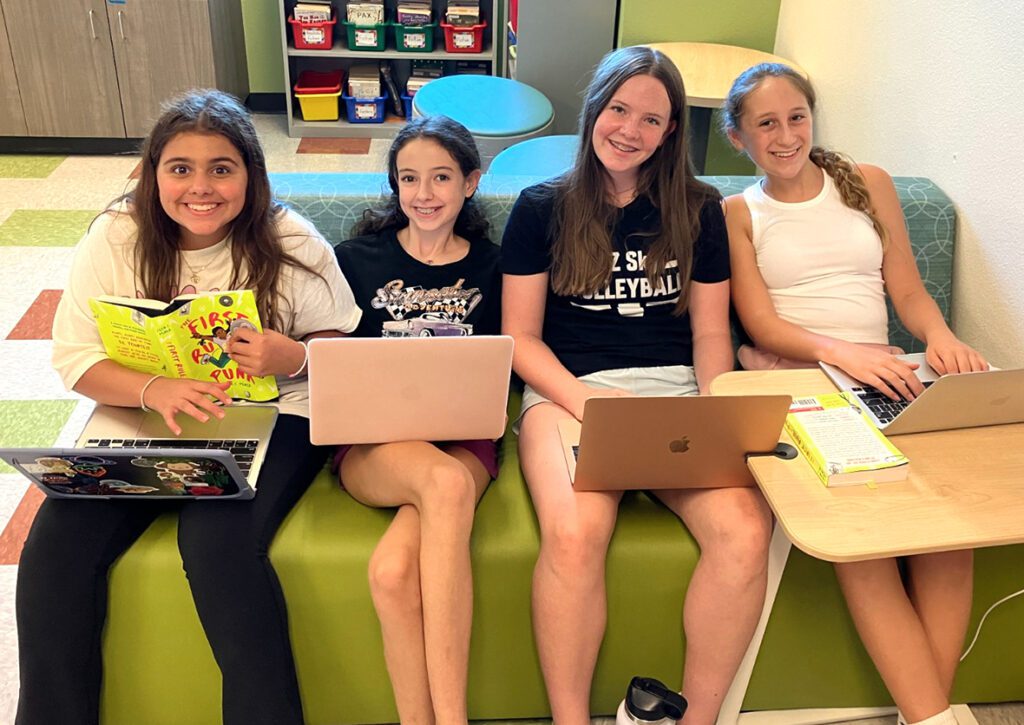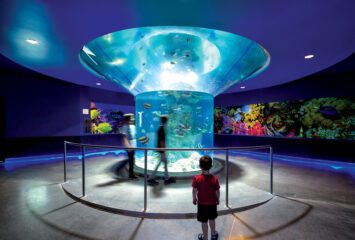9 Ways to Implement Responsive Classroom at Your School
Part of building a positive school culture involves recognizing students who reflect our mission, who exhibit our core values, and who embody good character. When we acknowledge these students, our language should highlight the skills or traits that underlie their actions. One way we do this at the lower school and middle school levels is through Responsive Classroom. Responsive Classroom practices build character by integrating social-emotional learning into everyday academic and behavioral routines, promoting a culture of respect, responsibility, and community. In a school that implements Responsive Classroom practices, you’ll see a focus on the whole child—academically, socially, and emotionally. The goal is to create a safe, joyful, and engaging learning environment where students can thrive both as learners and as members of a community. A Responsive Classroom approach in schools creates an environment that prioritizes both academic success and social-emotional learning. Here’s what it typically looks like in a school setting:
1. Warm and Welcoming Classrooms
- Physical Environment: Our middle school classrooms are arranged to be inviting, with spaces that support collaboration, individual work, and reflection. Lower school desks may be grouped to encourage interaction, and there are areas for whole-class gatherings, such as a carpet or circle area for Morning Meetings.
- Student-Centered Design: The layout of the classroom is student-centered, with materials accessible to students, so they can take ownership of their learning environment. Walls feature displays of student work, class-created rules, and charts for routines or procedures.
2. Structured Daily Routines
- Morning Meeting: Our lower school day begins with a Morning Meeting, where students gather in a circle to greet each other, share experiences, engage in a group activity, and read a morning message. In middle school, our students begin their day with Advisory where they set the tone for their day by reflecting on good character traits and community building. This sets a positive tone for the day and builds community.
- Consistent Schedules: Classrooms follow a predictable schedule that includes time for academic learning, social interaction, and reflection. Students are aware of routines and expectations, which helps create a sense of security and order.
3. Positive and Respectful Interactions
- Positive Teacher Language: Teachers use respectful and encouraging language to guide students. They focus on reinforcing positive behaviors, offering clear expectations, and helping students reflect on their actions. For example, our kindergarten through second graders always focus on whole-body listening with their eyes, ears, and bodies actively engaged for learning.
- Student Voice and Choice: Students have a voice in decision-making, whether it’s contributing to classroom rules, making choices in their learning, or reflecting on their behavior. This fosters a sense of responsibility and ownership over their school experience.
4. Active Engagement in Learning
- Interactive Modeling: Teachers use interactive modeling to demonstrate expected behaviors or academic tasks. This involves showing students exactly how something should be done, followed by guided practice, feedback, and more practice.
- Engaging Lessons: Lessons are designed to be engaging and interactive, with opportunities for students to collaborate, ask questions, and think critically. Teachers use various instructional strategies to meet the diverse needs of their students.
5. Collaborative and Inclusive Environment
- Cooperative Learning: Students frequently engage in cooperative learning activities that require teamwork and communication. This could include partner work, group projects, or peer discussions where students practice working together respectfully and productively.
- Inclusion and Equity: The classroom culture promotes inclusion and equity. Teachers ensure that all students have access to the learning, and diverse perspectives are valued. Differentiation is common, with accommodations made to meet the needs of all learners.

6. Logical and Respectful Behavior Management
- Logical Consequences: Instead of punitive punishments, teachers use logical consequences to help students learn from their mistakes. For example, if a student disrupts the classroom, even in middle school, they may be asked to “take a break” and return when they are ready to rejoin the group respectfully.
- Proactive Behavior Supports: Teachers proactively teach expected behaviors, reinforce them consistently, and create a positive atmosphere that reduces the likelihood of misbehavior. Students are supported in developing self-regulation and problem-solving skills.
7. Regular Reflection and Goal Setting
- Closing Circle: Lower school classrooms end the day with a Closing Circle, where students reflect on the day’s experiences, celebrate successes, and set goals for the next day. This practice reinforces positive behaviors and encourages self-awareness.
- Individual and Group Reflection: Teachers build in regular opportunities for students to reflect on their learning and behavior, both individually and as a group. This reflection helps students develop self-awareness and responsibility.
8. School-Wide Consistency and Culture
- Common Language and Practices: From kindergarten through the middle school grades, there is consistency in the language and practices used by teachers. Morning Meetings, logical consequences, and positive reinforcement are common features in every classroom, creating a cohesive and supportive school culture.
- Community Building Events: The school might hold school-wide events or assemblies that reinforce the principles of Responsive Classroom, such as celebrating achievements, promoting kindness, or addressing social-emotional learning topics.
9. Strong Relationships Between Students and Adults
- Teacher-Student Relationships: Teachers build strong, trusting relationships with students. They know their students well, take time to connect with them individually, and foster a supportive and encouraging learning environment.
Family Involvement: The school actively involves families in the learning process. Teachers communicate regularly with parents, and there may be events or activities that invite family participation, further strengthening the home-school connection.




